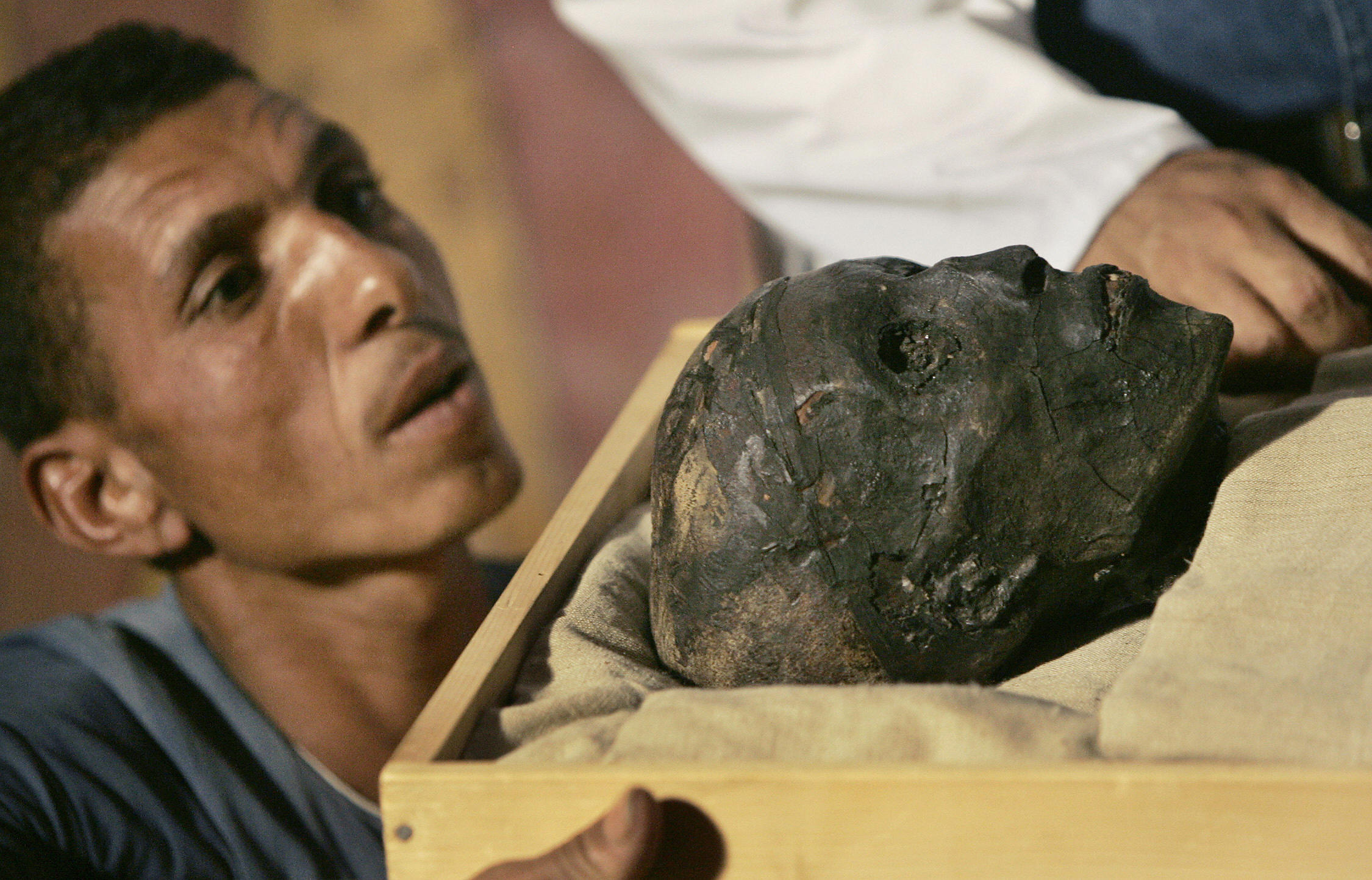What did King Tut look like?
Egyptologists studying King Tutankhamun are piecing together what he may have looked like based on the remains of his mummy, personal artifacts, pharaoh portraits and figurines of his likeness.
One hundred years ago, on Nov. 4, 1922, an archaeological team discovered the tomb of Tutankhamun, revealing many "wonderful things" from ancient Egypt, including the boy king's mummy.
These discoveries provided a wealth of information on Tutankhamun, who ascended the throne at about age 9 and died when he was about 19. However, exactly what the pharaoh looked like remains uncertain. Studies have examined his health, and there have been a number of attempts to virtually reconstruct his likeness.
A 2010 study of Tutankhamun and other mummies published in JAMA found that Tutankhamun was about 5 feet, 6 inches (1.67 meters) tall when he died and suffered from a number of medical maladies, such as malaria and Köhler disease, which can cause the feet to swell and impair walking. He also experienced necrosis (the death of bodily tissue) from a broken bone in his left foot — something that may have contributed to his death.
Related: King Tut's father revealed in stunning facial reconstruction
"Tutankhamun looked like a person who was suffering physically," Zahi Hawass, a former minister of Egyptian antiquities and co-author of the JAMA paper, told Live Science in an email. "He limped and used a stick to walk. He had malaria."
Despite these health problems, Tutankhamun was still active, Hawass said. "He liked to hunt wild animals and built a palace near the Sphinx for hunting," Hawass said. "Despite any physical issues, he was active enough to have an accident and injure his leg two days before he died."
Hutan Ashrafian, clinical lecturer in surgery at Imperial College London, said Tutankhamun would have walked with a limp, had a slightly longer-than-normal skull, had somewhat enlarged breasts (from a condition called gynecomastia, caused by hormonal imbalances), had buckteeth and been relatively skinny. He was "relatively frail in physique," Ashrafian, who has studied Tutankhamun and his mummy, told Live Science in an interview.
Get the world’s most fascinating discoveries delivered straight to your inbox.
In 2012, Ashrafian published a paper in the journal Epilepsy & Behavior suggesting that Tutankhamun and his ancestors suffered from familial epilepsy, which may have caused him to have seizures. Ashrafian said some of Tutankhamun's health problems may be related to genetic problems from inbreeding, since Egyptian pharaohs in the 18th dynasty often married relatives.
Virtual reconstruction?
There have been a number of attempted "virtual" reconstructions of Tutankhamun over the years, but Hawass said he doesn't believe any of them are very accurate. Other scholars also expressed concerns about trying to do a "virtual" reconstruction of Tutankhamun.
"A perfect reconstruction still has uncertainties," such as wrinkles, eye color, hair color, skin tone and small scars, Dr. Frank Rühli, dean of the faculty of medicine at the University of Zurich, told Live Science in an email. Rühli has studied Egyptian mummies, including Tutankhamun's, and found that on average, mummy tissue shrinks by 53% from when the person was alive. Tut's mummy is also "significantly altered" from how he looked in life — for instance, in ancient times the mummy caught fire from the embalming oils on it — making it "notoriously difficult" to try to reconstruct what the pharaoh looked like, Rühli said.
Additionally, CT scans of Tutankhamun's mummy can only tell you so much, Dr. Irwin Braverman, professor emeritus of dermatology at Yale Medical School, told Live Science in an email. "CT studies cannot tell you what the soft tissues looked like in life. The mummy's tissues have been shrunken, distorted and desiccated," Braverman said.
The most accurate depictions of Tutankhamun are likely those created by the ancient Egyptians in the pharaoh's lifetime, said Salima Ikram, a distinguished professor of Egyptology at The American University in Cairo. "I think that he looked as he was represented, except that he had more of an overbite," Ikram told Live Science in an email. The overbite appears on the medical scans of Tutankhamun and it seems to run in his family, Ikam noted. She said that the wear patterns on Tut's shoes and walking sticks suggest his limp was not very severe.
According to Ashrafian, some of the smaller statues of Tutankhamun made in the pharaoh's time may be some of the best representations of what Tutankhamun looked like. "People don't always give enough credit to the ancient sources," Ashrafian said.

Owen Jarus is a regular contributor to Live Science who writes about archaeology and humans' past. He has also written for The Independent (UK), The Canadian Press (CP) and The Associated Press (AP), among others. Owen has a bachelor of arts degree from the University of Toronto and a journalism degree from Ryerson University.



